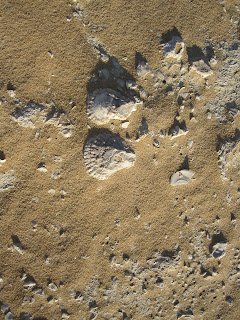Although more like a hill than a mountain, the entire site was covered in old tombs. Most of them looked like the indentations in the picture above, but there were several that were better preserved.
We were allowed to go into two tombs that had original paintings from Roman times. Unfortunately, no cameras were allowed.
This is the oracle temple where Alexander the Great visited when he came to Siwa and where he was 'confirmed' as a god and pharaoh. It was remarkable to see that the temple was in nearly as good repair as the surrounding walls and other buildings built just over 100 years ago.
Nearby are the remains of the Temple of Amun.
There is only one wall remaining, but you can see some interesting paintings and hieroglyphics on it. We heard that Muhammed Ali was the one that ordered the temple pulled down in the mid-1800s as it affronted his sensibilities as a Muslim.
The last 'historical' site we went to was Cleopatra's Bath. This is a cold water spring located near the temples. Even the Siwans don't believe that Cleopatra was ever here, but they have built a pool around it and a couple of shops.
and then stopped at a place that looked like a salt flat.
As we walked closer, however, we realized that what we were walking on was
Our trip ended by visiting a mini oasis which was a fresh water lake.
We were told it was safe to swim in the lake, but we contented ourselves with wading and speculating on how the large number of fish in the water might have gotten there. No one who might have known spoke any English and this little lake is not remarkable enough to have its own encyclopedia entry. It will just have to remain one of the many mysteries about Egypt for now.











No comments:
Post a Comment
Note: Only a member of this blog may post a comment.